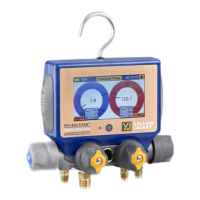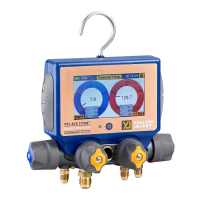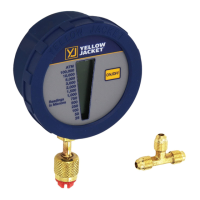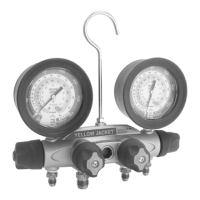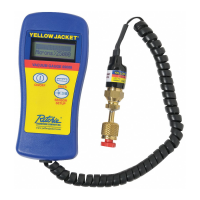Why is the temperature reading incorrect or not displaying on my Yellow Jacket Measuring Instruments?
- CcvillaJul 28, 2025
If the temperature reading on your Yellow Jacket Measuring Instruments is incorrect or not displaying, first, check the temperature clamp connections on the back of the manifold to ensure the barrel connector is fully seated. Also, check the clamp connections to the system to ensure they are properly attached. Make sure T1 is attached to the system low-side, and T2 to the system high-side. For P51-860 models, ensure that Tsy mode is selected.
